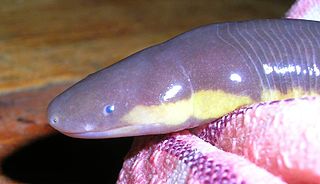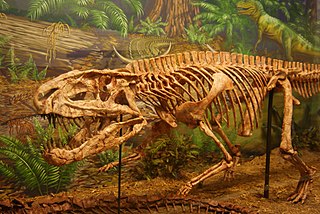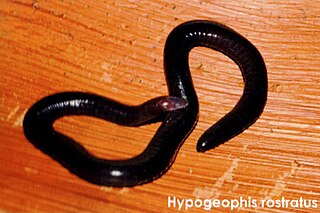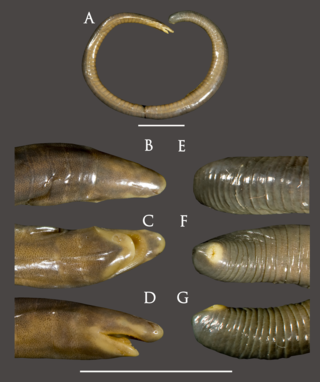
Gower or the Gower Peninsula is in South West Wales and is the most westerly part of the historic county of Glamorgan, Wales. It projects towards the Bristol Channel. In 1956, the majority of Gower became the first area in the United Kingdom to be designated an Area of Outstanding Natural Beauty.

The Red "Lady" of Paviland is an Upper Paleolithic partial male skeleton dyed in red ochre and buried in Wales 33,000 BP. The bones were discovered in 1823 by William Buckland in an archaeological dig at Goat's Hole Cave which is a limestone cave between Port Eynon and Rhossili on the Gower Peninsula, near Swansea in south Wales. Buckland believed the skeleton was a Roman era female. Later, William Solace examined Goat's Cave Paviland in 1912. There, Solace found flint arrow heads and tools and correctly concluded that the skeleton was in fact a male hunter-gatherer or warrior during the last Ice Age. Over the last 100 years, more advanced dating procedures have shifted the age from the Mesolithic period to the Palaeolithic era of the last Ice Age.

Caecilians are a group of limbless, vermiform (worm-shaped) or serpentine (snake-shaped) amphibians. They mostly live hidden in soil or in streambeds, and this cryptic lifestyle renders caecilians among the least familiar amphibians. Modern caecilians live in the tropics of South and Central America, Africa, and southern Asia. Caecilians feed on small subterranean creatures such as earthworms. The body is cylindrical and often darkly coloured, and the skull is bullet-shaped and strongly built. Caecilian heads have several unique adaptations, including fused cranial and jaw bones, a two-part system of jaw muscles, and a chemosensory tentacle in front of the eye. The skin is slimy and bears ringlike markings or grooves, which may contain tiny scales.

Rhinatrematidae is a family of caecilians, also known as the Neotropical tailed caecilians, American tailed caecilians. or beaked caecilians. They are found in the equatorial countries of South America.

The Ichthyophiidae are the family of Asiatic tailed caecilians or fish caecilians found in South and Southeast Asia as well as southernmost China.

Uraeotyphlus is a genus of caecilians in the family Ichthyophiidae. There are seven species in this genus, all of which are endemic to the Western Ghats of southwestern India. Previously, the genus has also been placed in its own monotypic family Uraeotyphlidae.

Callulina is a small genus of frogs in the family Brevicipitidae with nine members in Tanzania and Kenya. Originally Callulina was thought to be monotypic and widely distributed through Eastern Arc Mountains in Tanzania and in southern Kenya. However, within the last decade eight new species has been identified, the majority of which are considered critically endangered by the International Union for Conservation of Nature (IUCN).

Rauisuchidae is a group of large predatory Triassic archosaurs. Some disagreement exists over which genera should be included in the Rauisuchidae and which should be in the related Prestosuchidae and Poposauridae, and indeed whether these should even be thought of as separate valid families. Rauisuchids occurred throughout much of the Triassic, and may have first occurred in the Early Triassic if some archosaurian taxa such as Scythosuchus and Tsylmosuchus are considered to be within the family.
Gegeneophis danieli, the Amboli caecilian or Daniel's caecilian, is a species of caecilians in the family Indotyphlidae. It was discovered from near Amboli in Western Ghats of Maharashtra.
Chikila fulleri, also known as the Kuttal caecilian, Fuller's caecilian, and Fuller's chikila, is a species of caecilian from South Asia. In 2012 it was reassigned to a newly erected family, Chikilidae.
Indotyphlus maharashtraensis is a species of caecilians described in 2004 by scientists of Bombay Natural History Society and the Natural History Museum, London. It is only the second species of Indotyphlus known to science, and only known from its type locality near Humbarli village, Satara District, in the Western Ghats of Maharashtra, India. Common names Humbarli caecilian, Maharashtra caecilian, and Konkan tail-less caecilian have been coined for it.

Batrachotomus is a genus of prehistoric archosaur. Fossils of this animal have been found in southern Germany and dated from the Ladinian stage of the Middle Triassic period, around 242 to 237 million years ago. Batrachotomus was described by palaeontologist David J. Gower 22 years after its discovery.
Uraeotyphlus gansi, the Gansi caecilian, is a rare species of caecilian, endemic to the Western Ghats of India. It was discovered in the Kaakkaachi-Naalumukku area of the Kalakkad Mundanthurai Tiger Reserve. U. gansi was named after Carl Gans (1923–2009), a renowned herpetologist from Texas.
Sterling Nesbitt is an American paleontologist best known for his work on the origin and early evolutionary patterns of archosaurs. He is currently an associate professor at Virginia Tech in the Department of Geosciences.
Gegeneophis is a genus of amphibians in the family Grandisoniidae. They are found in southern and northeastern India.

Ichthyophis davidi, the Chorla giant striped caecilian, is a new caecilian species of India discovered in Chorla, a village situated on the borders of Goa, Maharashtra, and Karnataka in the Mhadei region of India. It is one of the largest known limbless, yellow-striped caecilians from the Western Ghats. It is named in honour of David Gower, department of zoology, Natural History Museum, London, in recognition of his contributions to Indian caecilian studies. The discovery was made by researchers Gopalakrishna Bhatta of the department of biology, BASE Educational Services Private Limited, Bengaluru; K. P. Dinesh and C. Radhakrishnan of western ghats regional centre, Calicut; P. Prashanth of Agumbe Rainforest Research Station, Agumbe; and Nirmal Kulkarni of Mhadei Research Centre, Chorla Ghat.

The Grandisoniidae are a family of common caecilians found in Africa, Seychelles and India. Like other caecilians, they superficially resemble worms or snakes. The family was formerly known as Indotyphlidae.

Chikila is a genus of amphibian in the order Gymnophiona (caecilians). It is the only genus within the family Chikilidae. All members of the genus are known from northeast India and Bangladesh.

Asperoris is an extinct genus of archosauriform reptile known from the Middle Triassic Manda Beds of southwestern Tanzania. It is the first archosauriform known from the Manda Beds that is not an archosaur. However, its relationships with other non-archosaurian archosauriforms are uncertain. It was first named by Sterling J. Nesbitt, Richard J. Butler and David J. Gower in 2013 and the type species is Asperoris mnyama. Asperoris means "rough face" in Latin, referring to the distinctive rough texture of its skull bones.
Rhabdops is a genus of snakes in the subfamily Natricinae of the family Colubridae. The genus is endemic to the Western Ghats of India.












